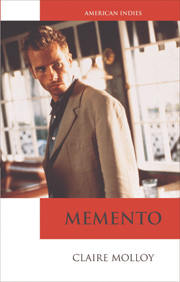Book contents
- Frontmatter
- Contents
- Series Preface
- Acknowledgements
- Dedication
- Introduction: Memento
- 1 Memento and Independent Cinema: A Seductive Business
- 2 Searching for a Slam Dunk: Marketing Memento
- 3 Puzzle Films, Ambiguity and Technologically-enabled Narrative
- 4 Memento as Noir
- 5 So What Really Happened? Memento, Fans and Online Interpretive Strategies
- Notes
- Bibliography
- Index
3 - Puzzle Films, Ambiguity and Technologically-enabled Narrative
Published online by Cambridge University Press: 05 August 2013
- Frontmatter
- Contents
- Series Preface
- Acknowledgements
- Dedication
- Introduction: Memento
- 1 Memento and Independent Cinema: A Seductive Business
- 2 Searching for a Slam Dunk: Marketing Memento
- 3 Puzzle Films, Ambiguity and Technologically-enabled Narrative
- 4 Memento as Noir
- 5 So What Really Happened? Memento, Fans and Online Interpretive Strategies
- Notes
- Bibliography
- Index
Summary
One day I drank too much coffee and said to myself, ‘Well, if you tell the story backwards, then the audience is put in the same position as Leonard. He doesn't know what just happened, but neither do we.’
Christopher NolanIn the first two months of its limited release, repeat theatrical viewings accounted for 20 per cent of Memento's $7 million box office between March and May 2001. The complex narrative was a crucial aspect of the film's success which drew cinemagoers back to theatres for multiple viewings and, in doing so, contributed substantially to making Memento the top grossing independent film and limited release of the year. Memento continued to enjoy a lucrative post-theatrical life on DVD as viewers remained intrigued by the film's innovative narrative as well as having the promise of extra features which included a chronological version of the film, hidden as an ‘Easter egg’, as a further enticement to purchase. Christopher Nolan always intended Memento to be a film that would encourage repeat viewings, remarking in one interview: ‘if you can make a film that actually does something different the second time you see it; to me that's a fascinating thing.’ Any suggestion that the film would repay multiple viewings with definitive answers though was implicitly denied by the actors and director.
- Type
- Chapter
- Information
- Memento , pp. 45 - 85Publisher: Edinburgh University PressPrint publication year: 2010



